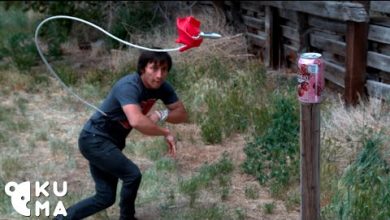Where to Stay in Hvar: 10 Best Areas
Table Of Contents
- Where to stay in Hvar: 10 Best Areas
- 1. Hvar Town, where to stay in Hvar for nightlife
- 2. Stari Grad, best place to stay in Hvar for those seeking culture and history
- 3. Zastrazisce, where to stay in Hvar to immerse in the local history and culture
- 4. Zavala, an ideal relaxing holiday destination for all ages
- 5. Jelsa, a quieter, popular resort to stay in Hvar without the high visitor numbers
- 6. Vrboska, where to stay in Hvar with family
- 7. Gdinj, enjoy a stay in a village that time (almost) forgot
- 8. Milna, a great value holiday destination for your stay in Hvar
- 9. Sucuraj, a great destination for beach lovers
- 10. Sveta Nedjelja, a pleasant, quiet resort for those seeking rest and relaxation
Where to stay in Hvar? This post highlights ten of the best places to stay on the island, and what you can expect to find in the local areas. While glossy travel magazines may wax lyrical about their island destinations, it often pays to do a little in-depth research of your own.Sitting in the Adriatic Sea, Hvar Island is 90 minutes travelling time from Split by ferry, and considered one of Croatia’s tourist hotspots in more ways than one.At a little over 65km long, with numerous freshwater springs; Hvar’s verdant countryside is one of pine forests, vineyards, fruit orchards, cultivated olive groves and acres of fragrant lavender fields.The island has a coastline of over 250km, with pebble beaches, marinas, coves and bays. Its history dates back to pre-historic times, and over the centuries it has been occupied by numerous invaders, signs of whom can be seen in much of its architecture.Today, Hvar is one of Croatia’s most popular tourist destinations, with visitors arriving from across Europe and beyond.If you enjoy ancient architecture, exploring picturesque countryside, want to party the night away, or relax in quiet coastal villages and towns, welcome to the 10 best areas to stay in Hvar.
Where to stay in Hvar: 10 Best Areas
Contents
1. Hvar Town, where to stay in Hvar for nightlife
Situated halfway up the west coast of Hvar, and dominated by an old Venetian fortress, the island’s capital town of the same name is a busy ferry port, marina, and popular meeting place of the rich and well-heeled.Whatever your holiday preferences, you can find them in and around Hvar Town. The port area is a hive of activity, with ferries arriving and leaving to the other islands, mainland, and points throughout the Adriatic.You can stroll the promenade around the marina, with its plethora of millionaire motor cruisers from across the Mediterranean bobbing at anchor.You can take some time out for a drink or snack on the terrace of one of the many cafes, bars, and restaurants around the quayside. Or walk a little further, to enjoy some time on one of the pretty pine fringed pebble beaches on the edge of town.As you walk up from the seafront, the town area is one of magnificent old buildings overlooking narrow winding cobbled streets, that lead you up to St. Stephen’s Square and its impressive cathedral, the heart and focal point of Hvar Town.The square and its cathedral date back to the 16th century, and with an area of 4,500-square metres, is said to be the largest square in Dalmatia.Visitors are allowed to enter the cathedral, although times are limited to 30 minutes before mass, held twice a day.As well as the cathedral, the square is lined with independent cafes, businesses and bars, and continues to be a sunny meeting place for the local senior citizens who put the world to rights over a coffee or local beer.At the rear of the cathedral is the Bishops Palace and museum of various religious relics. While just outside the town centre is a Franciscan Monastery and the Church of our Lady of Mercy.Other places of interest include the Hanibal Lucic Summer Residence, to the rear of the Bishop’s Palace, the Benedictine Monastery, the Arsenal and Theatre built in 1612, and the magnificent fortress above the town, with its fabulous views out to sea.Numerous guided trips are available to enjoy, including for the wine connoisseurs, tours of local vineyards and wineries.You can hire a boat and explore the Pakleni Islands which lay just off the Hvar coast. Or hike into the interior, to enjoy the sweet scented fragrance of the acres of lavender fields.Hvar Town is a mix of the old and the modern. Independent businesses, shops, bars and eateries rub shoulders with high-class gourmet restaurants and upmarket fashionable cocktail bars and clubs, that attract the affluent and nouveau riche to this modern millionaire’s playground.Whether you just want a friendly family restaurant to enjoy a pleasant evening meal, or trendy bars and nightclubs where you can party ‘til dawn, you’ll find them all in Hvar Town.Accommodation is plentiful, with a varied selection of sumptuous 4 and 5-star hotels and villas, as well as a good selection of mid-range and privately owned lets.
2. Stari Grad, best place to stay in Hvar for those seeking culture and history
Situated on the island’s northern side, at the top of a narrow 8km deep cove, Stari Grad is one of the island’s oldest towns. In fact in English, Stari Grad means Old Town.Dating back to 385BC, it was colonised by Greeks who arrived from Faros on the Greek island of Ikaria. Even today, many of the signposts and street signs still carry the name ‘Faros’.It is a holiday destination that just oozes relaxation, and you can feel the stresses of modern life beginning to dissipate even before you drop off your cases in the hotel.A wide walkway will lead you around the harbour and marina areas of the bay, where you will find the majority of the town’s bars and restaurants. There is also a small beach. Not sand or pebbles, but concrete. Nonetheless, it still seems to attract a lot of the local and visiting sun worshippers.For those who feel a beach isn’t a beach unless it’s got pebbles or sand, a pleasant stroll around the headland will get you to some pretty beaches with a backdrop of pines that reach the shoreline.Stari Grad itself is like an architectural history book through the ages. Ancient buildings line narrow paved alleyways, and surround the small squares bedecked with pots of colourful flowers. Bougainvillea cascades over walls and terraces, and the air is fresh and fragrant.The Stari Grad Plain is a must visit. It is a form of agricultural planning introduced by those early Greeks, which has survived through the centuries, and was designated a UNESCO World Heritage Site in 2008.Other places of interest include the old town walls, parts of the old Greek settlement, a Roman countryside Villa, a Greek tower on the Stari Grad Plain, and two Illyrian forts above the town.There are no less than nine churches and chapels to be explored, as well as the 16th century Tvrdalj Castle, Palace Biankini which today houses the Stari Grad Museum, the House and Mausoleum of Sime Ljubica built in 1887, and an old windmill that sits on the harbour’s south side.Night times tend to be pleasantly quiet affairs, with plenty of choice of family bars and restaurants dotted around the town area.If you’re a people person, most of the action takes place in the friendly bars and eateries around the harbour, but don’t expect disco bars and all-night parties, for those you’ll need to head for Hvar Town, a 25-minute journey by cab.Stari Grad has a good selection of accommodation available from mid-range hotels to private apartments and villas, and is considerably cheaper than Hvar Town.
3. Zastrazisce, where to stay in Hvar to immerse in the local history and culture
Do you consider yourself a bit of a trailblazer? If your idea of a good holiday is glorious isolation, and immersing yourself in the local culture and lifestyle of your chosen destination away from the tourist hordes, then Zastrazisce could be the place to choose when debating where to stay in Hvar.Zastrazisce is a tiny village with just 200 residents. It is made up of several small hamlets scattered around the area, and sits in the east of the island 193m above sea level.Old stone cottages make up the housing, with one school, one shop, two churches, and one eatery serving the village and outlying area.Although there are other local villages close by, for anything more than the necessities, a 20km drive to the town of Jelsa will probably be needed.Although centuries ago the population made a living from cattle rearing, nowadays it is made from tending the orange groves, olive groves, and lavender fields around the area, with a small amount from the tourist industry.A hire car is certainly worth considering to make the most of this area, the main road through the area is the 116, although biking around the lanes and villages is also popular.The pride of Zastrazisce is a privately owned olive tree, which has been dated as being over 2,000 years old. Other close-by places of interest are the village of Humac and its stone cottages, and the Grapčeva cave, also in Humac village, with its stalagmites and stalactites.There is also a good selection of pretty bays and coves that can be explored from Zastrazisce, on both the north and south sides of the island.Accommodation in the area is limited to private lets, mainly converted cottages, and evenings can be spent enjoying the culture and swapping yarns with the locals and other visitors.Read also: Where to stay in Dubrovnik, where to stay in Zagreb, where to stay in Split
4. Zavala, an ideal relaxing holiday destination for all ages
If you’re looking for beautiful countryside, superb, uncommercialised pebble beaches, hours of sunshine, and an area not totally overrun by tourists, Zavala could be the place for your stay in Hvar.Nestling on the island’s south coast, with a backdrop of pine-clad hills, terraced lavender and rosemary fields, and orange and olive groves, Zavala village and its small port offers the choice of relaxing days on the beach, investigating the local area, and pleasant evenings spent with like-minded visitors.Approaching Zavala can be an experience in itself. Travelling from Jelsa on the narrow but picturesque road, you reach the pretty village of Pitve, and its one-kilometre long, unlit, single lane tunnel, controlled by traffic lights.As you emerge from the gloom of the tunnel, a panoramic vista of the sparkling azure Adriatic, its pristine coastline, and outlying islands opens up in front of you, and you know you’ve picked the right place to stay in Hvar.Sitting just inland from the coast, a short walk from the village will get you to the harbour, and its pleasant promenade which will guide you past hotels, apartment blocks, and pebble beaches to the Bay of Petarcica at one end, and the harbour with its bars and restaurants at the other.Night life consists of the bars and restaurants around the village and port, where you can enjoy locally grown and pressed olive oil, fresh fish, fruit, and the very best of local wines.If you choose a romantic stroll in the moonlight from a harbourside restaurant to your apartment, be sure to take a torch, as the walkway is unlit.Accommodation in Zavala is varied and good value, with a choice of apartments, villas, hotels, and a campsite.
5. Jelsa, a quieter, popular resort to stay in Hvar without the high visitor numbers
Backed by high mountains, with forests and vegetation that reach the shoreline and its clean unspoilt beaches, Jelsa has grown into one of the most popular places to stay in Hvar.Located in the north of the island, 26km from Hvar Town, Jelsa dates back to the 14th century, when it was a small agricultural village and fishing port, before becoming a major ship building area up to the 19th century.Although today Jelsa is very much a tourist destination, it still retains different architectural styles that date back to the 15th and 16th centuries.The Church of Saints Fabian and Sebastian, and the paved square on which it sits, was constructed in the 16th century, with surrounding buildings dating from the 17th and 18th centuries.While Jelsa doesn’t have the quaint, historical appeal of Hvar Town, it also doesn’t have the volume of visitors. Pleasant afternoons and evenings can be spent exploring the souvenir shops, businesses, bars, cafes and restaurants.The harbour area, with its wide walkway and bustling activity, is a pleasant area to visit and relax, while watching the world go by. The area has plenty of beaches to be visited, with the only sandy beach on the island just 2-kilometres outside of town.For the naturists, the beaches of Zecevo and Glavice are nudist friendly, and reached by a regular water taxi.There are a number of places of interest a few kilometres out of town you can visit by hire car or scooter. But booking an organised trip is the best way to enjoy the experience. Especially so if visiting vineyards or wineries is on the itinerary.Night life, if not buzzing, has a good selection of restaurants, and a variety of bars aimed at all age groups. Although a number of bars party on after others have closed, don’t expect to be drinking into the early hours.Accommodation around Jelsa ranges from basic 2 and 3-star hotels, to good 4 and 5-star hotels, villas, and apartments.
6. Vrboska, where to stay in Hvar with family
Another scenic village on Hvar’s north coast, Vrboska sits 6km east of Stari Grad and 4km west of Jelsa. Vrboska was founded back in the 15th century as a port, and spread on both sides of Vrboska Bay and its long narrow estuary.As business improved, and the port expanded, the village and port area were joined by a multi-arch stone bridge, which soon became a number of stone bridges, as the town developed into much as you see it today.Nestling tight into the top end of the cove, Vrboska is surrounded by hills, evergreen forests, and cultivated olive and fruit groves. As recently as the early 20th century, the town still operated a sardine canning factory, but sadly, no longer.Now its income is derived primarily from tourism and the marina, with a little coming from the land and the sea.Places of interest around the town include the St Mary of Mercy church built in 1579. The Church of St Lawrence. And the Fisherman’s Museum, telling the history of fishing in the area. The Stari Grad Plain is also close by, and well worth the short journey.Local beaches include Soline, an attractive family beach just a short stroll through the pine groves. A couple of popular naturist beaches are also close by.One with a campsite, which can be reached following the village paths, and FKK Auto Camp Nudist, which is just one kilometre from the village.There are also a few pretty pebble beaches a short walk from the town for the more modest sun worshippers.Around town and the harbour area are plenty of souvenir shops, general stores, businesses, bars, and restaurants to keep the most ardent explorers busy.Nightlife is what you make it, with a good number of restaurants, bars, and clubs catering for all tastes and appetites.Accommodation is plentiful across the spectrum, from budget apartments to sumptuous villas. If you’re wandering where to stay in Hvar with the family, Vrboska ticks all the boxes.
7. Gdinj, enjoy a stay in a village that time (almost) forgot
Gdinj sits just on the east side of the narrow part of Hvar island and is 30km from Hvar Town. Along the main road (116) you will pass Humac and Zastrazisce on your journey to what is almost the village that time forgot.A seemingly random group of old stone cottages along the roadside, Gdinj began life back in the 16th century, as eight small hamlets that over the years have amalgamated to become one village.Today, the village has around 100 permanent inhabitants, most working the land or running the few local shops, bars, and restaurants. Although some of the deserted homes have been converted to accommodate an increasing number of pioneering tourists, many remain deserted and empty.To make the most of this rural area, a hire car or other mode of transport should be considered, although the local bus route from Hvar Town does stop here on its way through.On first consideration, you might wonder why anyone would want to spend time in Gdinj, but on a warm sunny summer’s day, you begin to appreciate the tranquillity that goes with being a little off the beaten track.The village sits 360 metres above sea level, and from the southern side you can look across the bay to the island of Korčula, and from the northern side across to the island of Brac.One narrow road takes you into the village proper, with alleyways and small squares branching off where you can spend time hunting out the limited, but friendly shops, mini-marts, bars, and eateries. For anything larger such as fuel, doctors, or hospital, a drive into Jelsa is required.Although most visitors choosing Gdinj for their stay in Hvar take the opportunity to explore the coastal area, pretty beaches and pine forested countryside; the 16th century Church of St. George is just a ten-minute stroll from the village centre, and well worth a visit.As you would expect, nightlife is limited to the few bars and restaurants, but it is a great place to stay for those who enjoy making friends with the locals, and immersing themselves in the lifestyle of the places they visit.Accommodation comprises mainly of privately owned, professionally converted studios, larger apartments, and houses, and is in the main attractively priced for the budget traveller.
8. Milna, a great value holiday destination for your stay in Hvar
Located in a secluded, attractive little bay on the southern coast of the island just 4km from Hvar Town, Milna is a small resort that packs a big punch.Very much a daylight resort, the village offers plenty to keep its guests satisfied during daytime and early evening, while allowing nearby Hvar Town to provide all the late night entertainment. Judging by the number of return guests, it’s a strategy that works.Milna dates from the 1600s, and remains of its old Baroque-Renaissance architecture can still be found on the western end of the village. One such example is the large historical mansion of the Ivanic family, which has been converted into an attractive boutique guest house for visiting tourists.Back in the 17th and 18th centuries, the whole area was one of lavender cultivation, and the oil was exported as far afield as Paris for perfume production.Exploring this picture perfect village, little touched by modern commercialism, you will notice almost as many restaurants as bars, and each one is highly competitive when it comes to offering the very best of local cuisine.The beautiful pebble beaches of Borca and Mala, separated by groves of pine, lay at the front of the village, with two more on the edge of town. The water is clean, crystal clear, and shallow, making it safe for all ages.Amenities are basic but adequate, with a bar/restaurant where snacks and drinks can be bought.Inland from the beaches, you can meander through pleasant wooded areas to enjoy some respite from the hot Mediterranean sun.If you enjoy immersing yourself in local history, Milna residents have a number of organised walking tours, where you can learn about the area’s interesting past.One such walk is to the nearby village of Malo Grablje. Completely abandoned by the whole population in the 1960s, you can investigate the empty properties, and learn the history of why it has been left to nature.Along with the walks there are hiking and cycling trails, tennis courts, boat hire and trips, scuba diving options, and even donkey rides around the village streets and beaches.Evenings are quiet affairs, with restaurants and bars closing before midnight, although some hotel bars may remain open later. If you want a little more action, Hvar Town is just a 10 minute cab ride away.Accommodation is good at all levels, although Milna’s popularity means early booking is recommended.
9. Sucuraj, a great destination for beach lovers
Sitting on the eastern tip of Hvar Island, the attractive port and fishing village of Sucuraj is the nearest point on Hvar to the Croatian coast, and just a 25 minute car ferry ride from mainland Drvenik.Although documents show that Sucuraj was first populated in the 14th century, few physical artefacts remain from the period.In 1573, a group of Augustinian monks constructed a monastery, of which a few ruins can still be found, and in the 17th century the Venetians built a large fort and the Church of St Anthony from Padova, which stands to this day.The village is split into two sections, with Upper Sucuraj lying on the north side of the port, and Lower Sucuraj lying on the south. From its position in the bay, visitors get the benefit of easy access to over 25km of coastline.The number of coves, bays and beaches that can be easily explored on both sides of Hvar island, make it one of the big attractions of Sucuraj.There are too many beaches to list, but all have the same theme of beautiful scenery, pebbled beaches, and crystal clear, clean water. The majority are suitable for young children, with metres of shallow water close in, but it always pays to check.A few are also divided, with areas for naturist and costumed sunbathers prominently sign posted, and one has a large motorhome/camping site on the foreshore.The port area bustles with activity, with regular ferries arriving from the mainland and other islands. The village still maintains a small fishing fleet, and has a number of fish restaurants offering the very best of fresh seafood.Like so many Dalmatian coastal villages, Sucuraj is made up of stone cottages, narrow streets and winding alleyways, where you can seek out general stores, and souvenir shops, businesses, restaurants, and bars.Other visitor attractions around the village area include the Church of St Jure, and the old lighthouse.With plenty of walking and cycling trails, as well as adequate roads, getting out and about to enjoy the countryside and coastal areas shouldn’t prove problematic. That said, there are plenty of both within easy walking distance.Nightlife in Sucuraj is good, with a varied selection of good quality restaurants and bars to suit all needs and wants.Accommodation is plentiful, but comprises predominantly houses, studios and larger apartments, with many overlooking the port area and beaches.If you’re wondering where to stay in Hvar for plenty of beach time, pleasant country walks, and good quality cuisine, Sucuraj should fit the bill.
10. Sveta Nedjelja, a pleasant, quiet resort for those seeking rest and relaxation
Lying beneath Hvar Island’s highest peak, Mount St Nicholas, the attractive village of Sveta Nedjelja nestles on the southern coast of the island.It is a quiet village favoured by visitors who prefer the peace and quiet of somewhere to stay in Hvar, that offers all the amenities required for an away-from-it-all, pleasant holiday experience.The lower seafront area has a small pebble beach, and houses most of the tourist apartments, while the village itself retains its original stone buildings, narrow streets and twisting alleyways.At the rear of Sveta Nedjelja, as the ground rises up the mountainside, you will find terraced vineyards growing the red grapes for Hvar’s famous red wine, and farmers small-holdings of olive groves.You will also find a small chapel at the top of Sveti Nikola, and below that an old cave, which contains the ruins of an old monastery, graveyard, and a church dating back to the 16th century.However, not everyone’s idea of a pleasant hike. It’s a hard arduous climb, taking 40 minutes to reach the cave, and a further 40 minutes to reach the summit.Sveta Nedjelja is also a popular destination with free-climbers and mountaineers, who arrive to enjoy honing their craft on its sheer cliffs and steep ascents.The seafront area, with its clean pebble beach, small harbour, bars and restaurants, makes for pleasant days relaxing in the sunshine.In the village you can explore the church, hunt out a favourite restaurant, bar or café, visit the lavender and rosemary essential oil producing business, or the next door wine bottling facility.The village also contains mini-marts and shops for your day-to-day self-catering requirements.If you feel the need for a change of scenery, there are numerous guided tours available to various attractions around the area. There are also many well-worn tracks, where you can walk or cycle into the interior to explore the countryside and small farms.If you have a hire car and prefer to do your own thing, the town of Jelsa is just a 20-minute drive, and Hvar Town a 30-minute drive away.For nightlife, read just a few restaurants, bars, and cafes. Accommodation is predominantly apartments and villas, many with sea views and balconies, terraces, or gardens. A great place to wind down and recharge the batteries.
Last, Wallx.net sent you details about the topic “Where to Stay in Hvar: 10 Best Areas❤️️”.Hope with useful information that the article “Where to Stay in Hvar: 10 Best Areas” It will help readers to be more interested in “Where to Stay in Hvar: 10 Best Areas [ ❤️️❤️️ ]”.
Posts “Where to Stay in Hvar: 10 Best Areas” posted by on 2021-08-13 20:48:08. Thank you for reading the article at wallx.net






